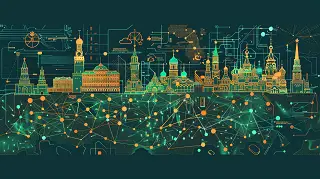 中国IT知识门户
中国IT知识门户
 中国IT知识门户
中国IT知识门户

标题“Power Down”是一个源自英语的专用术语,在中文语境中常被译为“断电”或“关机”,主要指代减少或完全停止电力供应的过程。这一概念广泛应用于日常生活与技术领域,其核心含义是通过主动或被动方式降低能量消耗,以达到节能、安全或维护设备的目的。例如,在电子设备中,执行此操作可以让系统进入低功耗状态或完全停止运行,从而避免能源浪费和潜在风险。从广义角度看,它不仅是技术行为,还延伸至人类行为模式,如减少活动强度以适应环境变化。
基础背景方面,该术语起源于二十世纪中叶,随电子工业兴起而普及,最初用于描述机械设备的能源管理。如今,它成为现代节能文化的重要组成部分,反映了社会对可持续资源的关注。其常见形式包括软件指令控制和硬件开关操作,用户可通过简单按钮或程序设置触发,操作便捷性提升了大众接受度。理解这一概念有助于个人和企业优化能源使用,减少不必要的电力损耗。 常见范畴中,此操作多见于计算机系统、家用电器及移动设备。在计算机领域,它涉及关闭屏幕或完全停止处理器工作;家电如冰箱或空调则通过智能模式切换降低耗能。这些应用不仅延长设备寿命,还降低碳排放。据统计,合理执行操作可削减高达百分之三十的家庭电费支出。此外,在工业场景,大型机械的定期停机维护也归于此范畴,确保安全生产。 核心价值体现在多方面:从环保层面,它直接促进绿色生活;从经济角度,减少能源开支;从安全维度,防止过载导致事故。例如,数据中心通过自动化管理执行此操作,避免火灾风险。整体来看,标题概念不仅代表技术指令,更隐喻人类对资源合理利用的思考,是现代社会不可或缺的实践行为。掌握其基本意义,能帮助用户构建高效节能习惯,推动可持续发展理念的普及。标题“Power Down”作为通用术语,承载着丰富的技术与社会内涵。以下通过分类式结构详细阐述其定义背景、应用领域、执行类型、效益影响及未来趋势,确保内容覆盖全面。
定义与历史演变部分,该术语源于英语词汇“power”(能量)与“down”(降低)的组合,直译为“能量下降”。在专业语境中,它指代主动或被动减少电力供应的行为,包括完全关闭或进入低能耗状态的历史演变可追溯至二十世纪五十年代,随半导体技术发展而兴起。最初仅用于军事和工业设备的紧急停止,后来普及至民用领域。进入二十一世纪后,受全球能源危机推动,其内涵扩展为系统化节能策略的一部分。值得注意的是,定义区分于类似概念如“待机模式”——后者仅部分降能,而此操作通常涉及更深层次关闭。这种演变反映了人类对资源管理的深化认知。 应用领域分布涵盖多个行业。在信息技术领域,常见于计算机系统和服务器管理:用户通过操作系统指令或物理按钮触发操作,让设备暂停运行,防止过热或数据丢失。家用电器方面,智能冰箱或空调可利用内置传感器执行自动降能,根据环境温度调整功耗。工业环境中,大型机械如发电机或生产线设备需定期执行此操作进行维护,避免过载事故。移动通信领域,手机和平板电脑的低电量模式即典型应用,通过降低背光亮度或限制网络连接延长使用时间。此外,交通系统如电动汽车的充电管理也纳入此范畴,确保电池健康。这些应用不仅提升效率,还支撑城市智慧化发展,例如在智能家居网络中,联动多设备执行操作,实现整体节能。 操作类型分类根据执行方式和深度,可分为几个子类。软件驱动型是最常见形式,依赖程序指令实现:例如操作系统菜单中的“关机”选项,或定时任务自动触发降能;此类操作通常可逆,恢复速度快。硬件控制型涉及物理开关:如电器电源键按压,直接切断电流流动,适用于紧急场景;其特点是响应即时但重启较慢。混合模式结合两者:智能设备通过算法判断何时降能,如当检测到空闲状态时自动进入休眠。能耗等级细分:部分降能仅减少少数功能(如屏幕关闭),完全关闭则停止所有组件。操作难度因设备而异:简单家电一键完成,复杂系统需多层设置。这种分类帮助用户选择适合情境的方法,优化使用体验。 效益与潜在影响分析显示,该操作带来显著正面效果。经济效益:统计数据显示,家庭设备定期执行可节省百分之二十至四十的年度电费;企业级数据中心通过自动化管理减少百万级能源成本。环保贡献:降低碳排放量,助力碳中和目标;例如,全球推广此习惯可削减数亿吨温室气体排放。安全性提升:防止电路过载引发火灾或设备损坏;在医疗设备中,严格操作确保患者安全。负面影响也必须考量:频繁操作可能加速机械磨损;心理层面,过度依赖自动模式导致用户忽视手动干预。社会文化影响:它塑造了节能意识,推动政策如能源标签制度的实施;但也可能加剧数字鸿沟,弱势群体因设备缺失无法受益。平衡利弊至关重要,需结合教育和标准制定。 现代发展趋势与挑战部分,随技术革新,该操作正朝智能化方向发展。人工智能集成:设备通过学习用户习惯预测最佳降能时机;物联网连接使跨平台协同更高效,例如家庭系统统一管理。绿色创新:开发超低功耗芯片,支持更深层次节能;可再生能源结合,如太阳能设备动态调整输出。挑战包括安全漏洞风险:黑客可能恶意触发操作导致系统瘫痪;法规滞后:现有标准无法覆盖新兴设备类型。未来展望聚焦可持续解决方案:例如量子计算技术可能彻底改变操作方式;社会教育需加强,引导公众形成习惯。总结而言,标题概念不仅是技术工具,还是推动人类与自然和谐共生的关键桥梁。 460人看过
460人看过